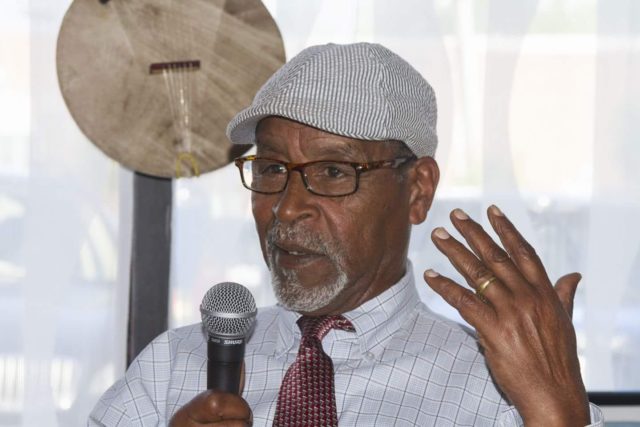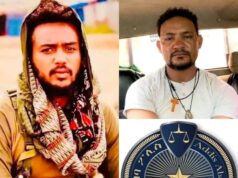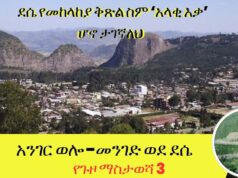/Addis Fortune/
He was a man of letters. Reading he did through tonnes of books, reflected primarily in his writings where he loved quoting the notables. But, no other notable may have a personal connection to the life and tribulations of Assefa Chabo, a renowned politician in his own right, as Douglas MacArthur, an American five-star general during the Second World War.
“Old soldiers never die,” said the General as one of his three most famous statements. “They fade away.”
Assefa passed away on April 23, 2017, in a hospital far away from Chencha, a place he hailed from, and which he penned on so fondly in many of his essays and a book titled “Yetizita Feleg”, literally translated threads of nostalgia. It was a collection of many of his essays written over decades, largely reflecting the context of his and his contemporaries’ journey in life.
He lived his formative and formidable years during the most turbulent and controversial decades of the 60s, 70s, and 80s. Assefa had as much of a controversial personality as many of his comrades, friends and foes. However, his talent as a wordsmith is unarguably prolific; despite it being his second language, his mastery of Amharic non-fiction writing is no less than legendary.
But his historical and political arguments are far from certain.
He has many admirers for the originality of his views; his critics may advance in number. Many question his role during the troubling years of the ‘Red Terror’, as the reasons and circumstances for his departure into exile remain little known.
Nonetheless, he had come a long way from his childhood in Chencha, in the Gamo Gofa Zone of the southern regional state, situated more than 450Km south of Addis Ababa. Assefa’s depiction of his birthplace, a plateau up in one of the mountains that spring up in Gamo, is simply captivating. He died having a romantic memory of the place, despite having been detached from it for decades, partly due to incarceration and in part due to exile.
Assefa’s rebellion started early on while attending school at primary level in Chencha. He was fired from an ecclesiastical school where he began studying. With some issues, he went on to Shashemane to finalise his primary education.
Getting a good result in an entry exam for a teacher’s college brought him to Addis Ababa before he joined the Ethiopian Civil Aviation Authority as a Meteorologist.
But the years he had enrolled to study law at Haile Selassie I University, now Addis Ababa University, was a time of student revolt and regional uprisings against the Imperial regime. Radical student movement leaders – from Tilahun Gizaw to Walelegn Mekonnen – were studying there; their slogan was “Land to the Tiller” and their mantra was “Marxism.”
While at the University, Assefa had campaigned for Mekonnen Bishaw (PhD), in an election to lead a student council, which Tilahun Gizaw had lost.
Assefa’s appearance before the 1972 Phillip C. Jessup International Law Moot Court Competition was one of the milestones in his academic career. With his team members, Goshu Wolde (later Colonel and now living in the US) and Abdul Wasie Yusuf, he won the Best Memorial title even though they were runners up in the Jessup World Cup Championship. Nevertheless, the trio received an imperial gold medal, which gave them significant media coverage.
This popularity and his column in the Amharic state daily Addis Zemen paved the way for his rather turbulent political career. As a politician, Assefa was not in the unknown. He was a figure to reckon with in the nation’s two missed opportunities: 1974 and 1991.
Following the demise of the Imperial regime, by junior officers in the military, the tactical preference of whether to work with the soldiers was one of the main fault lines among the students who grouped themselves along the Ethiopian Peoples’ Revolutionary Party (EPRP) and the All Ethiopian Socialist Movement (AESM), a.k.a. Me’eson.
Assefa belonged to neither of them, despite having friends in both camps. His relationship with the leaders of these parties, the foremost ships boarding most voyagers of leftist politicians, was mutually unpleasant. He was instrumental in the formation of another party, the Ethiopian Oppressed People’s Revolutionary Struggle (EOPRS), Ech’at in its Amharic acronym.
Comprising largely of people of southern origin, the leadership was composed of figures such as Baro Tumsa and Lencho Letta, and many others mostly from Oromia and southern parts of the country. Organising this party, Assefa was known to be close to the officers in government, who had grouped themselves under the political banner, Se’ded, chaired by Mengistu Hailemariam (Col.), also head of the Derg.
Little is known on what turned his relationship sour with the officers, and in particular with Mengistu. What is known remains controversial; when the officers in government found out about his involvement in party politics, and Ech’at was deemed a platform for a clandestine formation of a separatist group under the Oromo Liberation Front (OLF), he was thrown into jail under the direct order of Mengistu. He came to despise, publicly, of some of the leaders of the OLF.
Assefa hardly got to practice law he was trained for. He was to remain in incarceration in the infamous Ma’ekelawi.
He met his political foes there while under solitary confinement. Fikre Zergaw and Birhanemeskel Reda of the EPRP were kept there before they were executed. He was in fear, but his gods were not eager to close the chapter on him.
Assefa drew a parallel of his time in Ma’ekelawi to Dante’s ‘Divine Comedy.’ It is like going to hell alive, but it was not completely dark. He had a knack for reading inmates like a book.
He stayed there for a little over a decade, with his solitary confinement easing eventually.
His sudden release from jail was followed by a regime change of the Marxist military government, by rebel forces under the leadership of individuals who were student radicals when Assefa was in college. He did not hesitate to be part of a transitional government, although shunned by many of the survivors of the EPRP and AESM. Mostly composed of the ruling EPRDF and the OLF, this government incorporated several other smaller parties, including Assefa’s newly formed Omotic Peoples’ Democratic Front (OPDF).
Assefa’s honeymoon with the new order was to end abruptly. Articles alleging him to have had a hand in the years of the Red Terror began to appear in the Amharic state daily Addis Zemen. No sooner, he had left the country for the United States. While there, Special Attorney, Grima Waqjira, pressed charges against him prompting Assefa to begin life in exile.
Some people do not buy this story. However, a 17-page document surfaced later on on the Internet, implicating the office Assefa was in charge of back in the late 1970s for the murder of student activists.
The document, a statement by the Public Organization Affairs Office of the province Gamo-Gofa, where Assefa was an administrator, conceded to eliminate anti-revolutionaries under custody in the province for, “feeding them is not different from bureaucratic tardiness.”
Despite its wide circulation, the authenticity of this document remains unverified. However, justices of the Supreme Court of the Southern Nations, Nationalities & Peoples’ State found Assefa guilty of “genocide and extrajudicial killings” in Gamo-Gofa during the time of the military regime. They sentenced him in absentia along with 48 others to 16 years of rigorous imprisonment.
In exile for over two decades, Assefa lived in more than 11 American states. Although nostalgia might have made his life unbearable and forced him into seclusion, his witty writings and provocative interviews helped him reconnect with his folks at home. His visibility in social media in recent years was viral, and created animated discussions and quarrelsome exchanges, albeit intermittently.
Because he was alive and robust in his media presence, his death was little expected. He passed away in a hospital in Dallas, Texas, perhaps profoundly attached to his birthplace, where he had plans to build a villa in Chencha. He was dreaming to live there, and not to die in a place thousands of miles away.
Assefa is survived by three children and nine grandchildren, while his eldest son died eight years ago.

























